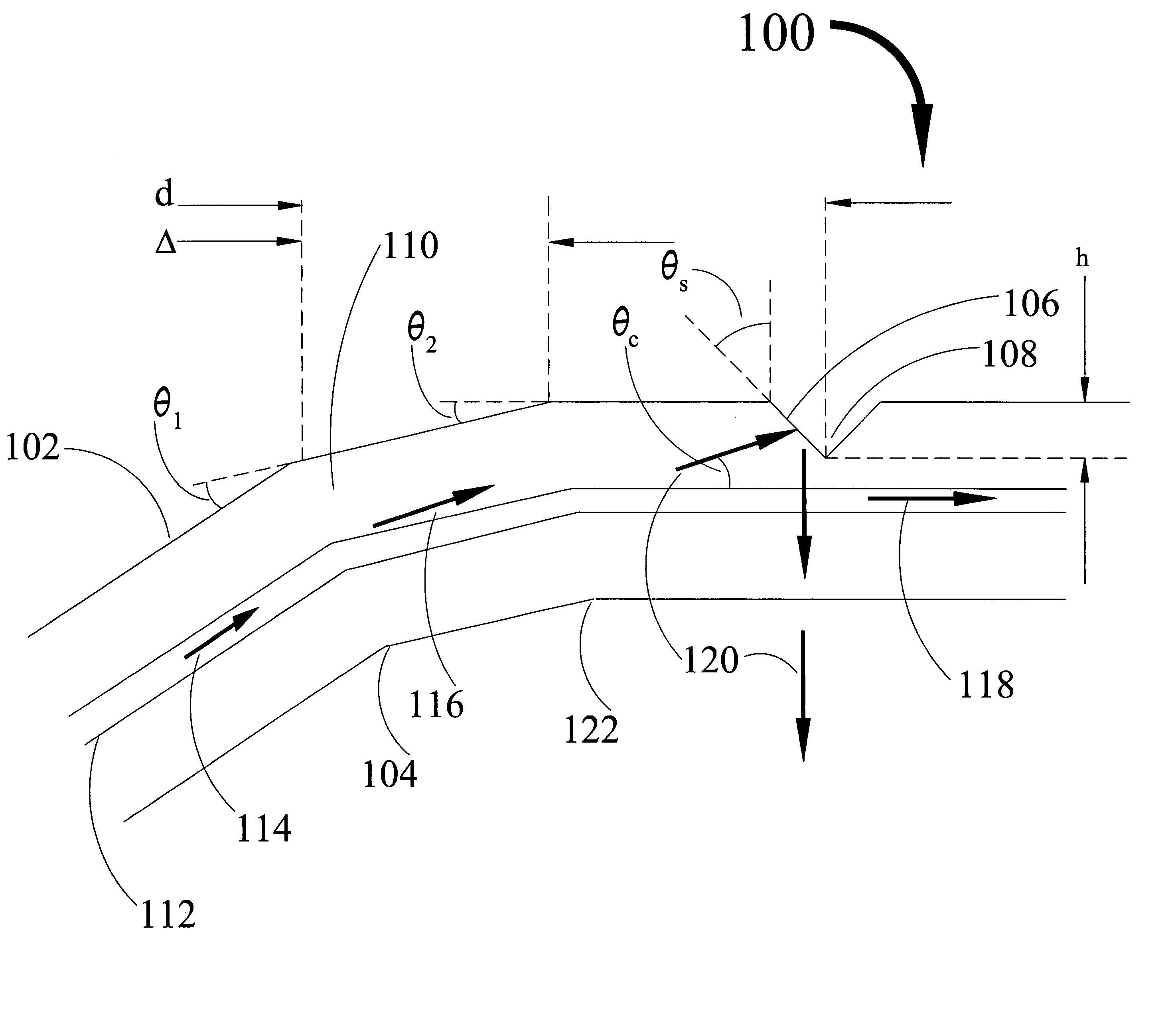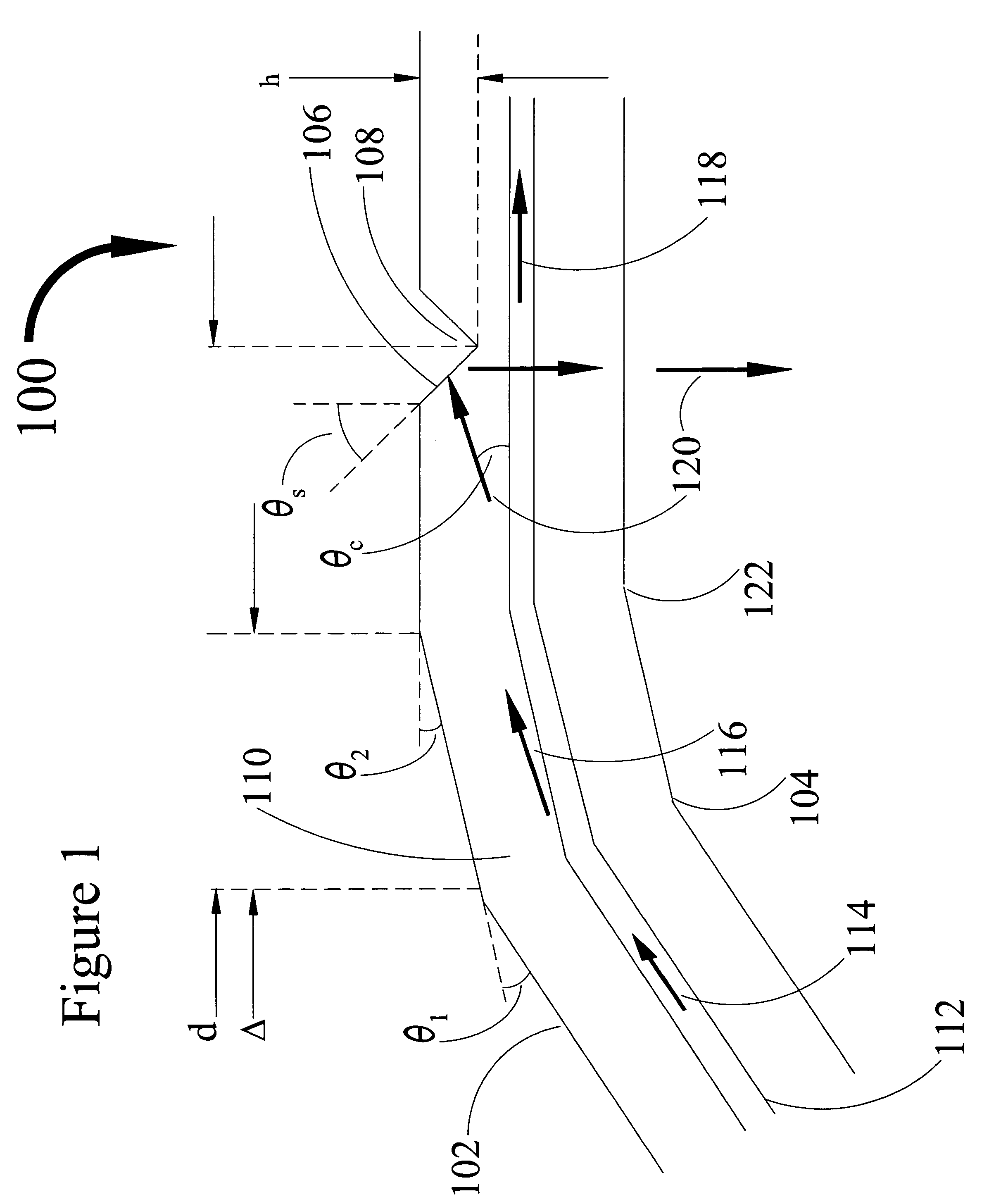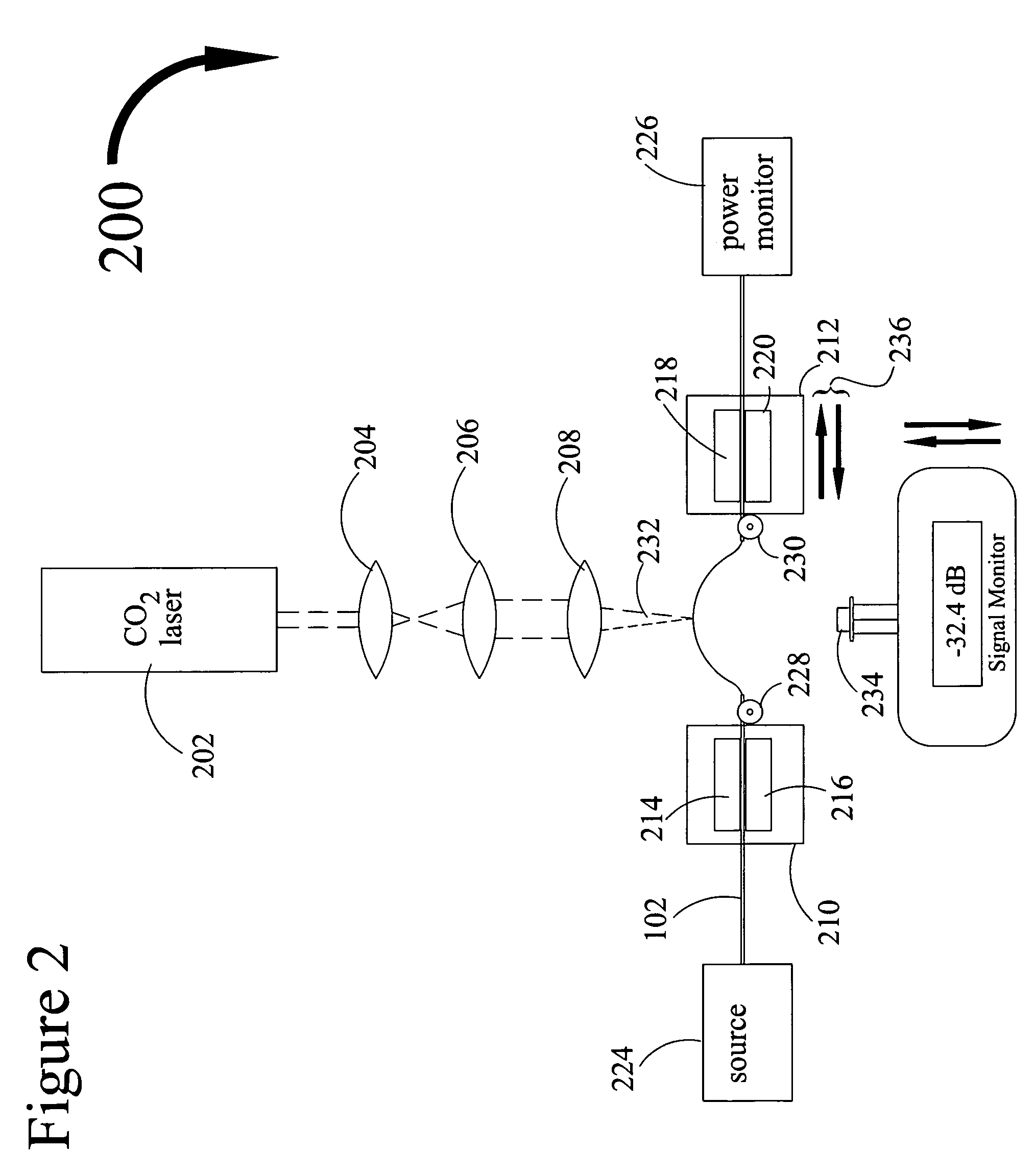Broadband fiber optic tap
a fiber optic tap and wideband technology, applied in the field of optical fiber taps, can solve the problems of inherent wavelength dependence and reduce efficiency, and achieve the effects of reducing the relative amount of light, reducing the wavelength dependence of the tap, and extending the wavelength rang
- Summary
- Abstract
- Description
- Claims
- Application Information
AI Technical Summary
Benefits of technology
Problems solved by technology
Method used
Image
Examples
Embodiment Construction
[0028]Referring to the drawings, FIG. 1 depicts fiber optic tap 100 comprising optical fiber 102, primary microbend 104, secondary microbend 122 and reflecting surface 106. Reflecting surface 106 and microbends 104 and 122 are formed using radiation from a single CO2 laser as described below. Hereinafter a microbend refers to a bent section of fiber having a radius of curvature comparable to the diameter of the fiber. In contrast, a macrobend refers to a bend having a radius of curvature that is relatively large compared to the diameter of the fiber. In the preferred embodiment, microbends 104 and 122 are annealed microbends, meaning they are formed in the fiber by locally heating the fiber above its softening temperature. Microbends 104 and 122 are thus permanent, stress-free structures in the fiber.
[0029]As described in more detail below, microbends 104 and 122 serve to scatter optical energy out of a core of fiber 102 into its cladding. The scattered energy is reflected out of a ...
PUM
 Login to View More
Login to View More Abstract
Description
Claims
Application Information
 Login to View More
Login to View More - R&D
- Intellectual Property
- Life Sciences
- Materials
- Tech Scout
- Unparalleled Data Quality
- Higher Quality Content
- 60% Fewer Hallucinations
Browse by: Latest US Patents, China's latest patents, Technical Efficacy Thesaurus, Application Domain, Technology Topic, Popular Technical Reports.
© 2025 PatSnap. All rights reserved.Legal|Privacy policy|Modern Slavery Act Transparency Statement|Sitemap|About US| Contact US: help@patsnap.com



